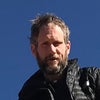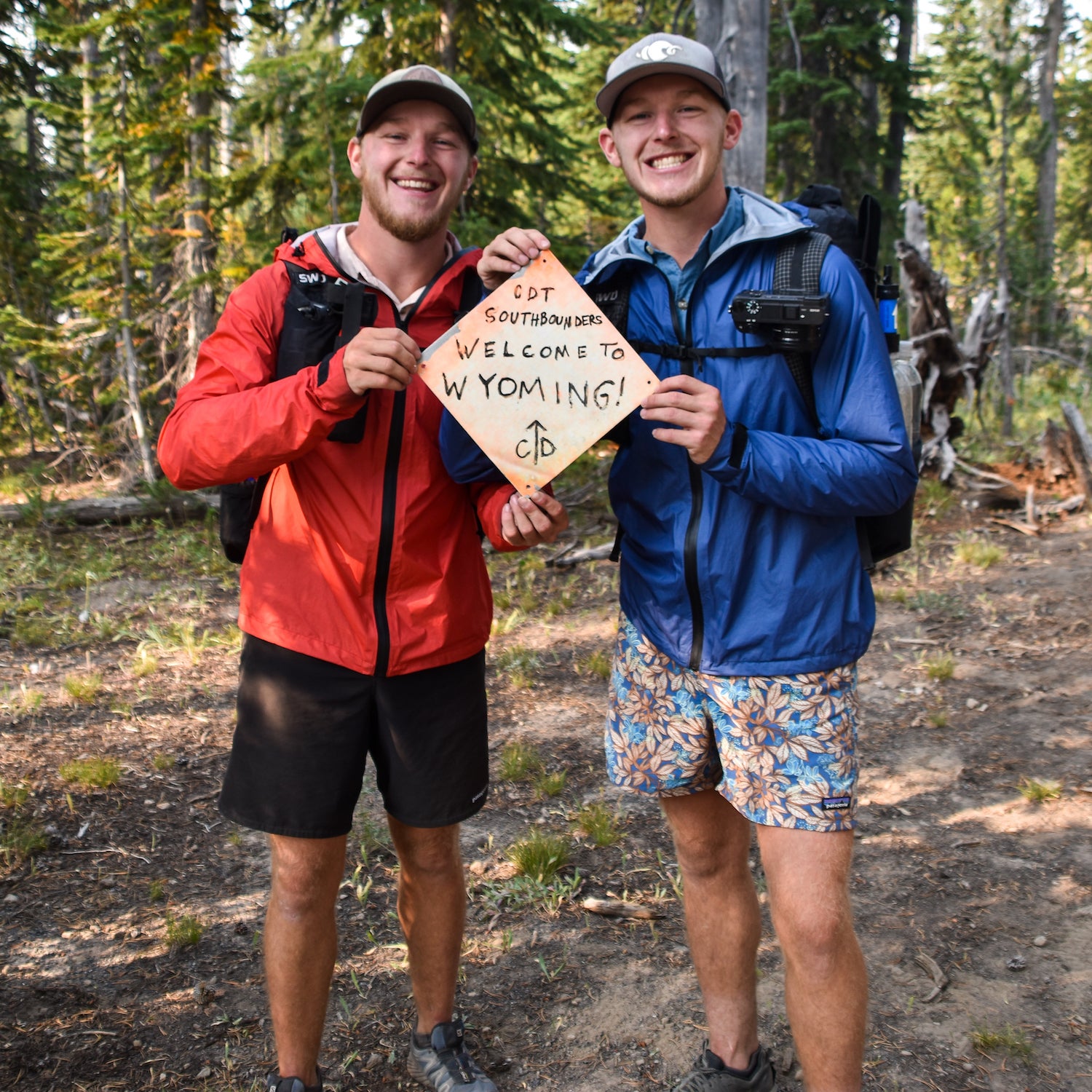When Garrett and Landen Napier were hiking the Appalachian Trail together in 2018, their fellow travelers would sometimes rib the 20-year-old twins, who were away from their family home in small-town West Virginia for the first time, about their enviably impervious bond. “What, do you two share a tent together, too?” the quip went.
Their emphatic answer: yes, actually.
“Oh, we shared a womb together for nine months,” says Landen with a laugh. “This is nothing. We’ve got so much more room in a tent.”
This year, on November 4, at the sunny southern terminus of the Continental Divide Trail, just north of the Mexico border in the Chihuahuan Desert, the Napiers became the first identical twins to complete the coveted triple crown of American hiking by finishing the Appalachian, Pacific Crest, and Continental Divide Trails. Since March 2018, when they stood beneath the that marks the unofficial start of the AT, the Napiers have walked, climbed, run, and trudged about 8,000 miles up and down three mountainous spines of the United States. Frick and Frack, as they’re known on trail, agree that the mix of elation and misery endemic to thru-hiking has only made them closer and more cooperative. But now, at the age of 23 and with the triple crown completed, they’re preparing for their lives to follow separate, unknown trails for the first time since they were born.
“We push each other to our maximum limits,” Garrett says. “There were things I don’t think I could have done without Landen there, like the Sierra in the snow. But then getting to share amazing views with your brother makes it all worthwhile.”
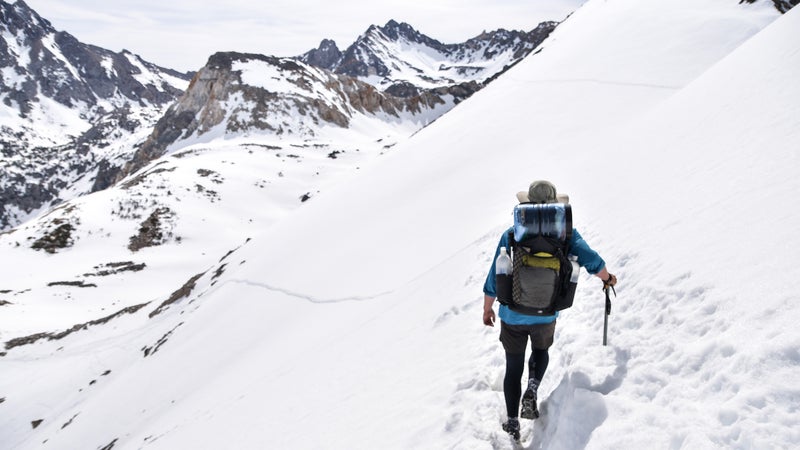
The two youngest of three boys, Landen and Garrett have always enjoyed a connection that could, at times, seem supernatural. As toddlers they would babble back and forth and appear to understand one another, though the syllables sounded like gibberish, their parents, Bella and Greg, remember. They played the same positions in sports and were “pretty equal,” they joke; in soccer, they were high-endurance wingers with the uncanny ability to make cross-field passes to one another without so much as a look or a word. They began rock climbing together in the famed nearby and even converted their shared bedroom into a bouldering gym. In a high school class of nearly 300, Landen graduated 11th, Garrett 12th. They enrolled in nursing school together, joined the West Virginia ski patrol together, and became EMTs together.
“They have just always worked together so well. Best friends, really,” says their mother. “They have been competitive, but they have always worked as one.”
Rather than taking ostentatious vacations to the East Coast, the twins’ parents, themselves West Virginia natives, often opted for family camping trips in the and wild spaces. That’s where Landen and Garrett discovered hiking and rock and ice climbing.
During one such family trek to —the river confluence and crucible of American history that also serves as the headquarters for the Appalachian Trail Conservancy—the boys spotted a flock of grizzled, sweat-stained northbound hikers and asked about their lives. When they heard about their AT adventures, Landen and Garrett, not yet teenagers, vowed to join them someday.
“They all looked so happy to be there,” Landen remembers. “We didn’t know when we’d do it, but we knew we had to do it.”
That time arrived eight years later, after Landen and Garrett had completed their first year of nursing school. The Appalachian Trail was a late gap year, intended as a pause before the demands of actual adulthood set in. They hiked at a rather leisurely pace, summiting Mount Katahdin in Maine after more than five months, an average time frame, according to the Appalachian Trail Conservancy. But early into their hike, they realized this wouldn’t be a one-and-done adventure; they began to hear about the triple crown and then met folks who had finished it.
“They looked so cool, with their ultralight packs,” remembers Garrett of triple crowners who zipped past the thru-hiking neophytes, lugging gargantuan . “We wanted to be like them.”
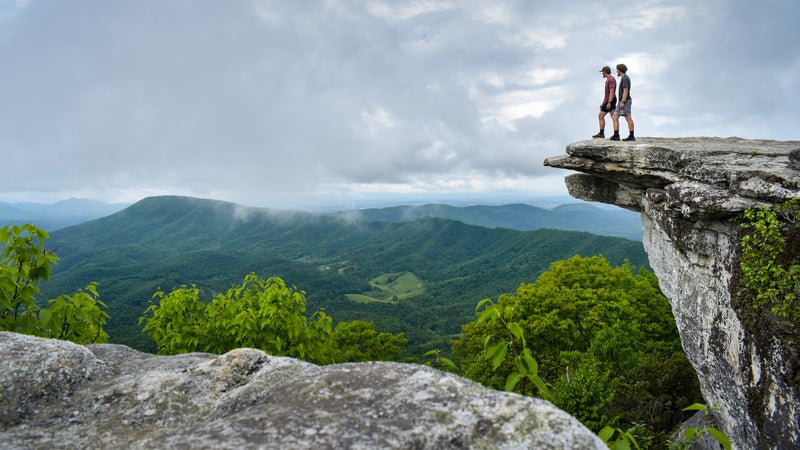
Only nine months later, they headed north from the southern reaches of California, starting the second leg of their triple-crown quest. During a long training run, a joke had turned into another audacious goal: though the PCT is nearly 500 miles longer than the AT, why not finish it in only 100 days, as they’d seen a few other hikers do the year before? They cruised through the early desert miles on pace, but a historic Sierra Nevada snowpack that sent other hikers home or through mountain bypasses slowed them to a paltry dozen miles per day.
“You’re mountaineering, and then you come down to a valley with a river that’s rushing from the snow first thing in the morning,” says Landen, who counted 35 waist-deep and two chest-deep river crossings. “There was never a time on the AT where we thought, I might die here. I felt that way every day up there.”
Through the Sierra, and on the verge of absolving themselves of their 100-day goalpost, the twins ran the numbers again. They’d need to average more than 35 miles per day through Oregon and Washington. They outran the Oregon mosquitoes with 11 consecutive 40-mile days, then powered through the final 84 miles of Washington in 36 hours. On the hundredth day, they finished at 10 P.M.
Neither that snow nor lack of sleep prepared them for the obstacles that began to stand in their way of the Continental Divide Trail. Their goal had been to fastpack, moving so quickly and lightly that entire route would take 82 days to complete, or half the amount of time they’d spent on the AT. They’d even saved enough money to fly to Spain, run the Camino de Santiago, and arrive on the CDT with trail-ready legs.
Just as their preparations for their southbound journey from Montana’s Glacier National Park to New Mexico began to intensify, the COVID-19 pandemic began dashing the thru-hiking season. Most hikers went home; those who remained became outlaws. Garrett and Landen never pondered breaking the law or defying trail custodians—could there be a better justification for letting go of your own ambitions, they reckoned, than a once-in-a-century pandemic?
Instead they signed up for duty with their region’s “COVID van,” a medical-response unit that answered any call related to the coronavirus. For 46 consecutive days, they were constantly on call, living together in an isolated RV and responding to more than 80 dispatches in full hazmat suits and gas masks. Their parents and community members dropped meals at the RV’s doorstep; aside from one another and their patients, all their interactions were virtual. They were the only two people working the job, twin brothers staring down COVID-19, alone but together.
“We didn’t sign up to get coronavirus, but it’s in our job descriptions—serve and protect the community,” says Landen, expressing gratitude for the resources the company provided to help ensure they didn’t. “There were so many employees in our company who had underlying health conditions. We were the best candidates.”
As their term ended in June, though, COVID restrictions began to lift and hospitalizations began to dip. The twins realized they might have a window on the CDT. If conditions worsened and states shut down again, they vowed to return home, content to have tried.
On the AT, the Napiers began to understand why veterans found so much solace in hiking—as Earl Shaffer, the first person to thru-hike the AT, put it, he wanted to “.” As EMTs, they’d seen former classmates devastated by car accidents and family friends or former teachers ravaged by cancer and heart attacks. According to , more people died from opioid overdoses in West Virginia in 2016 than in any other state, an epidemic that has continued; the Napiers sometimes administer lifesaving Narcan five times in a single week. Giving the CDT a chance after 1,100 consecutive hours on call for COVID would give them the opportunity to walk the pandemic out of their systems, too.

On July 4, they touched the Canadian border, did a 100-mile road walk around the currently closed Blackfeet Indian Reservation, which is typically part of the CDT, then headed south. They battled a ferocious blizzard in Wyoming’s Wind River Basin. They negotiated resupplies with as little human contact as possible, depending on boxes stuffed with Penn Station chocolate-chip cookies and West Virginia pepperoni rolls shipped by their parents and neighbors. Exactly four months after they began, and two days before their 23rd birthday, they were smiling at the trail’s southern terminus and donned makeshift plastic crowns.
“We’d always heard so many stories about the CDT, about how remote and unmaintained it was,” says Garrett. Indeed, they saw only 25 other thru-hikers in 2,800 miles and frequently found themselves bushwhacking or slinking through fallen trees. “That’s what we’d been looking for.”
Landen picked up his twin’s thought: “Our focus shifted, too, from doing it so fast to using the time to reflect on the past two years, to take everything in.”
This year Landen’s pack weighed a little more—15.3 ounces more, to be exact, the weight of a tent. For the first time, the twins carried separate tents so that Garrett could share space with his girlfriend, Kelley Guimont. The couple met briefly while thru-hiking the AT in 2018, then stayed in touch as the twins hiked the PCT in 2019.
When the coronavirus dashed Kelley’s plans to pursue the PCT, they invited her to join their mission. The trio camped side by side, Garrett and Kelley’s deep-green pitched a few feet from Landen’s little blue abode. It was a small first step on perhaps an inevitable trajectory: growing up and growing at least a bit apart, something hiking 8,000 miles could only forestall for so long.
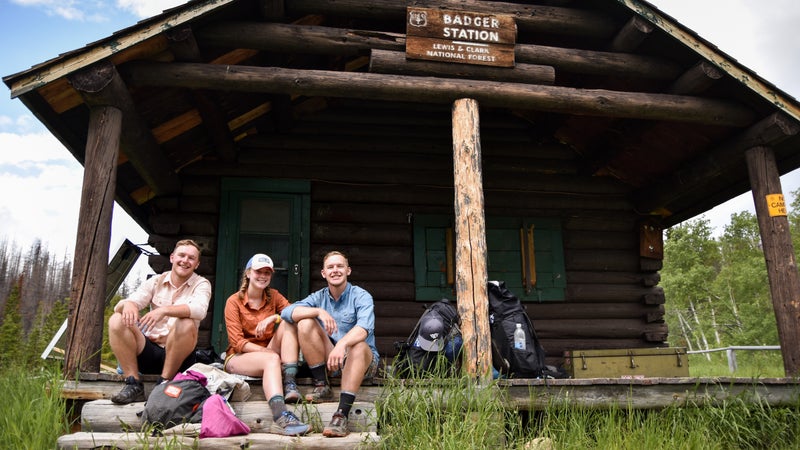
Garrett—who is currently living in New Hampshire with Kelley, outfitting the Sprinter he and Landen bought—will soon begin school again. He hopes to become a travel nurse and possibly join the Grand Canyon’s search and rescue team. Landen, meanwhile, intends to enlist in the Coast Guard and apply for its Aviation Survival Technician program, one of the world’s most elite search and rescue operations. The twins rhapsodize when discussing these pursuits; when the distance they entail comes up, however, they grow unusually taciturn and laugh nervously.
“We don’t know how we feel about it,” Garrett manages. “It’s still sinking in.”
But back in West Virginia, their parents are more sanguine. They figure the special relationship their children have built over the past 23 years will continue to motivate them, even as they branch onto different paths.
“As teenagers, every plan they made was together—even if they got married, they were going to live next door,” says Bella. “It does feel different, but I’m not stressed. I know they’ll still be close, even if they’re separating.”

